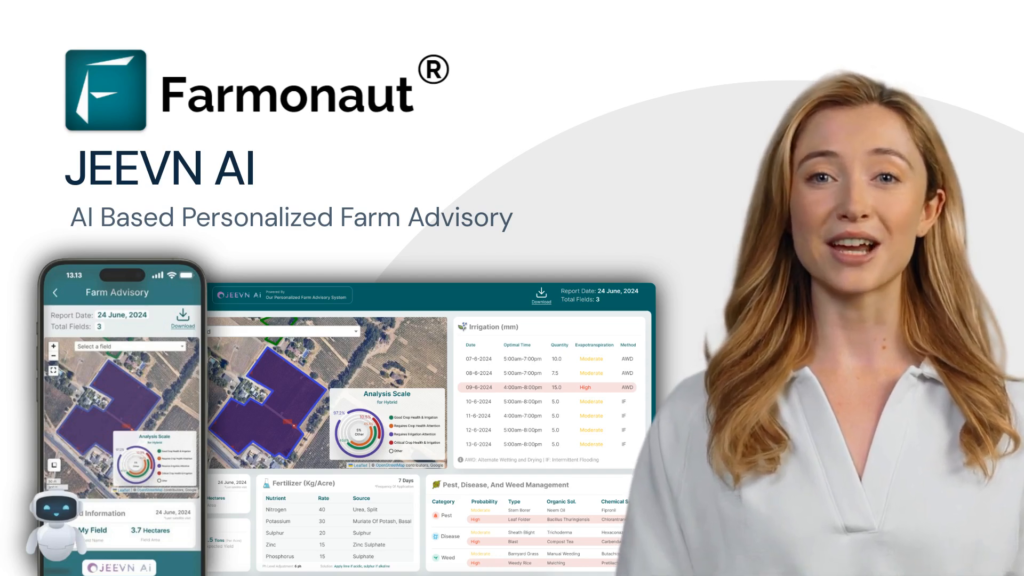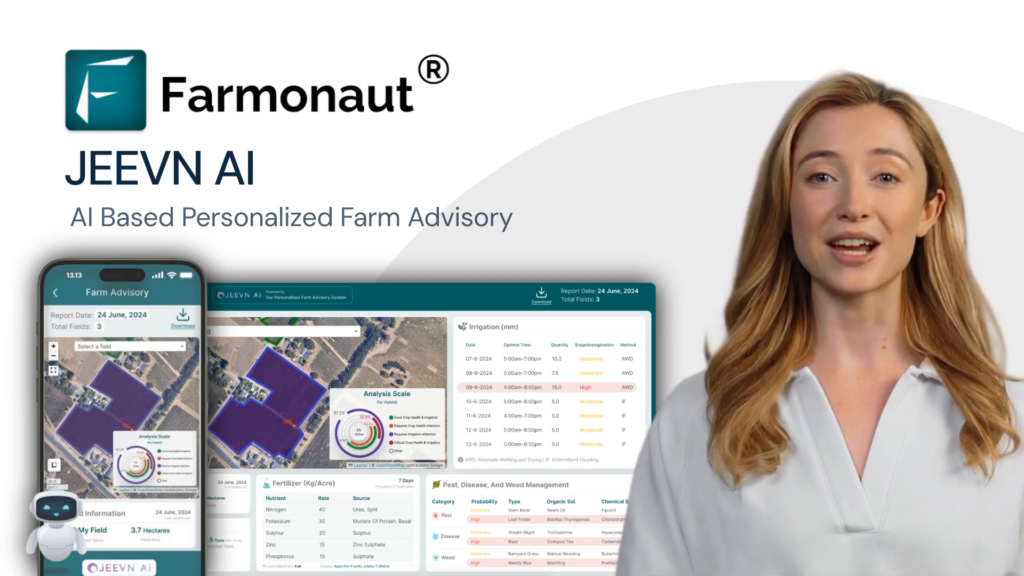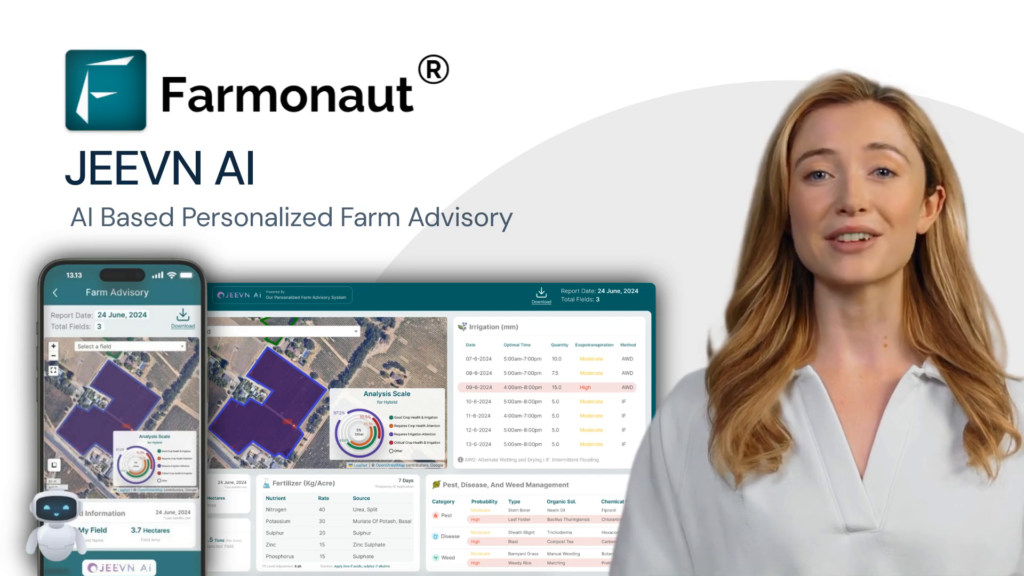RFID Sensor Market Soars: North America Leads $50 Billion Forecast by 2033 in Supply Chain Revolution
“The RFID sensor market is projected to grow from $18 billion in 2023 to $50 billion by 2033.”
In today’s rapidly evolving technological landscape, the Radio Frequency Identification (RFID) sensor market is experiencing unprecedented growth. As we delve into this exciting realm of innovation, we’ll explore how RFID technology is revolutionizing supply chains, enhancing operational efficiency, and reshaping industries across the globe. Join us as we unpack the latest market trends, technological advancements, and the pivotal role North America plays in driving this remarkable expansion.
The RFID Sensor Market: A Billion-Dollar Opportunity
According to a comprehensive report by Allied Market Research, the RFID sensor market is on a trajectory of exponential growth. Valued at $18 billion in 2023, this burgeoning sector is forecasted to reach an astounding $50 billion by 2033. This projection represents a compound annual growth rate (CAGR) of 10.9% from 2024 to 2033, underlining the immense potential and transformative power of RFID technology in various industries.

As we navigate through this blog post, we’ll uncover the key drivers behind this remarkable growth, explore the diverse applications of RFID sensors, and examine how different industries are leveraging this technology to streamline their operations and gain a competitive edge.
Key Drivers of RFID Sensor Market Growth
Several factors are fueling the rapid expansion of the RFID sensor market:
- Advancements in Automation: As industries increasingly embrace automation, RFID sensors play a crucial role in facilitating seamless data collection and process optimization.
- IoT Integration: The integration of RFID technology with the Internet of Things (IoT) is opening up new possibilities for real-time tracking and data analysis.
- Rising Consumer Expectations: In an era of instant gratification, consumers demand faster, more efficient services, driving businesses to adopt RFID solutions for improved inventory management and supply chain visibility.
- Regulatory Pressures: Stricter regulations across industries, particularly in healthcare and food safety, are pushing companies to implement robust tracking and traceability systems.
These drivers collectively contribute to the growing adoption of RFID sensor technology across various sectors, from retail and logistics to healthcare and manufacturing.
RFID Technology: Types and Applications
To better understand the RFID sensor market, let’s break down the different types of RFID technology and their applications:
1. Passive RFID
Passive RFID tags dominated the market in 2023, and for good reason. These tags are:
- Cost-effective
- Compact in size
- Easy to integrate into various products
Passive RFID tags are particularly popular in retail and logistics for inventory management. They enable businesses to track products efficiently without the need for line-of-sight scanning, significantly improving operational efficiency.
2. Ultra-High Frequency (UHF) RFID
UHF RFID technology led the market in terms of frequency range. Its advantages include:
- Extended read ranges
- Fast data transfer rates
- Ideal for logistics applications
UHF RFID is widely used in supply chain management, asset tracking, and inventory oversight, offering businesses enhanced visibility and control over their operations.
As we explore the diverse applications of RFID technology, it’s worth noting how similar principles of data-driven decision-making are being applied in other sectors. For instance, in agriculture, companies like Farmonaut are leveraging satellite technology to revolutionize land use and crop management. While RFID focuses on close-range tracking, satellite-based solutions offer a broader perspective for large-scale operations.
Interested in exploring cutting-edge agricultural technology? Check out Farmonaut’s  for innovative farming solutions.
for innovative farming solutions.
RFID in Logistics and Supply Chain Management
The logistics and supply chain segment emerged as the largest application area for RFID sensors in 2023. This dominance is driven by:
- The need for efficient inventory tracking
- Demand for enhanced supply chain visibility
- Pressure to reduce costs and improve accuracy
RFID solutions in logistics offer numerous benefits:
- Real-time Tracking: Monitor the movement of goods throughout the supply chain.
- Inventory Accuracy: Reduce errors and discrepancies in stock management.
- Theft Prevention: Enhance security measures and reduce shrinkage.
- Efficiency Gains: Streamline warehouse operations and order fulfillment processes.
The growing e-commerce sector and demand for faster delivery times further accentuate the importance of RFID technology in optimizing logistics operations.
“North America leads the RFID sensor market, driven by technological innovation and strict healthcare regulations.”
North America: Leading the RFID Revolution
North America emerged as the top player in the RFID sensor market in 2023 and is projected to maintain its leadership throughout the forecast period. Several factors contribute to this regional dominance:
- Robust Technological Infrastructure: The region’s advanced tech ecosystem fosters innovation in RFID solutions.
- Significant R&D Investments: Continuous research and development drive improvements in RFID technology.
- Stringent Healthcare Regulations: Strict compliance requirements in healthcare boost RFID adoption for product traceability.
- Early Adoption in Retail: North American retailers have been quick to implement RFID for inventory management.
The region’s leadership in RFID technology aligns with its broader focus on technological innovation across various sectors. For instance, in agriculture, North American companies are at the forefront of adopting precision farming techniques.
For those interested in agricultural technology, Farmonaut offers solutions that complement RFID technology in supply chain management. Explore their offerings on mobile platforms:
RFID Market Segmentation and Growth
To better understand the RFID sensor market’s trajectory, let’s examine its segmentation and growth prospects:
| Category | 2023 Estimate | 2033 Forecast | Key Applications |
|---|---|---|---|
| Market Size | $18 billion | $50 billion | Supply Chain, Retail, Healthcare |
| Passive RFID | 60% market share | 65% market share | Inventory Management, Asset Tracking |
| UHF Systems | 40% market share | 45% market share | Logistics, Warehouse Management |
| Logistics Sector | 30% of applications | 35% of applications | Supply Chain Visibility, Order Tracking |
| Retail Sector | 25% of applications | 28% of applications | Inventory Control, Anti-theft |
| Healthcare Sector | 15% of applications | 20% of applications | Patient Tracking, Equipment Management |
| North America | 40% regional share | 42% regional share | Cross-industry Adoption, Innovation Hub |
This table illustrates the significant growth expected across various segments of the RFID sensor market. The increasing adoption in key industries and the dominance of certain technologies underscore the market’s dynamic nature and potential for further expansion.
Innovations Driving RFID Technology Forward
The RFID sensor market is constantly evolving, with new innovations enhancing its capabilities and applications. Some notable developments include:
- Miniaturization: Smaller, more versatile RFID tags for a wider range of applications.
- Improved Read Ranges: Advancements in antenna design and reader technology for extended detection distances.
- Enhanced Data Capacity: RFID tags capable of storing more information for comprehensive tracking.
- Integration with Other Technologies: Combining RFID with GPS, sensors, and IoT devices for more robust solutions.
These innovations are opening up new possibilities for RFID application across various industries, from retail to healthcare and beyond.
While RFID technology focuses on close-range tracking and data collection, other technologies complement its capabilities in different sectors. For instance, in agriculture, satellite-based solutions offer a broader perspective for large-scale operations. Farmonaut’s web app tutorial demonstrates how satellite data interpretation can revolutionize farming practices, showcasing the diverse applications of technology in different industries.
RFID in Retail: Transforming Customer Experiences
The retail sector has been quick to adopt RFID technology, leveraging its capabilities to enhance operational efficiency and improve customer experiences. Key applications include:
- Inventory Accuracy: RFID enables real-time tracking of stock levels, reducing out-of-stock situations and overstock issues.
- Omnichannel Fulfillment: Accurate inventory data facilitates seamless online and in-store shopping experiences.
- Loss Prevention: RFID tags help retailers combat theft and reduce shrinkage.
- Smart Fitting Rooms: RFID-enabled fitting rooms can suggest complementary items and streamline the try-on process.
By implementing RFID solutions, retailers can create more efficient operations and deliver the seamless, personalized experiences that modern consumers demand.
RFID in Healthcare: Enhancing Patient Safety and Operational Efficiency
The healthcare industry is another major adopter of RFID technology, driven by the need for improved patient safety, asset management, and regulatory compliance. Key applications include:
- Patient Tracking: RFID wristbands help monitor patient location and movement within healthcare facilities.
- Medication Management: RFID-enabled drug dispensing systems reduce medication errors and improve patient safety.
- Equipment Tracking: Hospitals use RFID to locate and manage valuable medical equipment efficiently.
- Supply Chain Management: RFID ensures the authenticity and proper handling of medical supplies and pharmaceuticals.
The adoption of RFID in healthcare not only improves operational efficiency but also contributes to better patient outcomes and regulatory compliance.
The Future of RFID: Emerging Trends and Opportunities
As we look towards the future of the RFID sensor market, several trends and opportunities are emerging:
- 5G Integration: The rollout of 5G networks will enhance RFID capabilities, enabling faster data transmission and real-time tracking on a larger scale.
- Blockchain and RFID: Combining RFID with blockchain technology will enhance supply chain transparency and product authenticity verification.
- Sustainable RFID Solutions: Development of eco-friendly RFID tags to address environmental concerns in large-scale deployments.
- AI and Machine Learning: Integration of AI with RFID data will provide deeper insights and predictive analytics for businesses.
These trends highlight the continuing evolution of RFID technology and its potential to drive further innovations across industries.
As we explore the future of RFID technology, it’s interesting to note how similar principles of data-driven decision-making are being applied in other sectors. For instance, Farmonaut’s large-scale usage for businesses and governments demonstrates how satellite technology and data analytics can be leveraged to optimize agricultural practices on a grand scale. While the technologies differ, the underlying goal of improving efficiency and productivity through data insights remains consistent across industries.
Challenges and Considerations in RFID Adoption
While the RFID sensor market is poised for significant growth, there are several challenges and considerations that businesses must address:
- Initial Implementation Costs: The upfront investment for RFID systems can be substantial, particularly for small to medium-sized businesses.
- Data Privacy and Security: As RFID systems collect and transmit sensitive data, ensuring robust security measures is crucial.
- Standardization: The lack of global standards for RFID technology can create interoperability issues across different systems and regions.
- Environmental Factors: Certain environments, such as those with high metal content or liquid, can interfere with RFID signals, requiring specialized solutions.
Addressing these challenges will be key to wider RFID adoption and realizing its full potential across industries.
RFID and the Internet of Things (IoT)
The integration of RFID technology with the Internet of Things (IoT) is creating new possibilities for data collection, analysis, and automation. This convergence is driving several key developments:
- Smart Cities: RFID-enabled IoT solutions are enhancing urban infrastructure management, from traffic control to waste management.
- Industry 4.0: In manufacturing, RFID-IoT integration is facilitating predictive maintenance, asset tracking, and supply chain optimization.
- Connected Retail: IoT-enhanced RFID systems are creating more personalized shopping experiences and enabling smart inventory management.
- Healthcare IoT: The combination of RFID and IoT is improving patient monitoring, asset tracking, and facility management in healthcare settings.
As RFID and IoT technologies continue to evolve and integrate, we can expect to see even more innovative applications that enhance efficiency, productivity, and user experiences across various sectors.
The Role of RFID in Sustainability Initiatives
RFID technology is playing an increasingly important role in sustainability efforts across industries:
- Supply Chain Transparency: RFID enables better tracking of product origins and manufacturing processes, supporting ethical and sustainable sourcing.
- Waste Reduction: Improved inventory management through RFID helps reduce overproduction and waste in various industries.
- Energy Efficiency: RFID-enabled smart building systems optimize energy usage in commercial and residential spaces.
- Recycling Initiatives: RFID tags on products can facilitate better sorting and recycling processes, improving overall recycling rates.
By leveraging RFID technology, businesses can not only improve their operational efficiency but also contribute to broader sustainability goals.
The application of technology to enhance sustainability is not limited to RFID alone. In the agricultural sector, companies like Farmonaut are leveraging satellite technology to promote sustainable farming practices. Their collaboration with organizations like the STEI Foundation in Africa demonstrates how advanced technology can be used to address global challenges such as food security and sustainable resource management.
RFID in Agriculture: Enhancing Productivity and Traceability
While RFID technology has found applications across various industries, its use in agriculture is particularly noteworthy. RFID solutions in agriculture contribute to:
- Livestock Management: RFID tags help track animal health, movement, and breeding information.
- Crop Traceability: RFID enables farm-to-table tracking, enhancing food safety and consumer trust.
- Equipment Tracking: Large farms use RFID to manage and maintain agricultural machinery efficiently.
- Supply Chain Optimization: RFID improves the tracking and management of agricultural products from farm to market.
While RFID focuses on close-range tracking and data collection, other technologies complement its capabilities in agriculture. For instance, Farmonaut offers satellite-based solutions for precision agriculture, providing a broader perspective for large-scale farming operations. Their API services allow for integration of satellite data into existing agricultural management systems, further enhancing the potential for data-driven farming practices.
Interested in exploring satellite-based agricultural solutions? Check out Farmonaut’s API services and API Developer Docs for more information.
The Economic Impact of RFID Technology
The growing adoption of RFID technology is having a significant economic impact across industries:
- Job Creation: The RFID sector is creating new job opportunities in areas such as system integration, data analysis, and hardware development.
- Productivity Gains: Businesses implementing RFID solutions often see substantial improvements in operational efficiency and productivity.
- Cost Savings: While initial implementation costs can be high, RFID often leads to long-term cost savings through improved inventory management and reduced labor costs.
- Market Expansion: The growth of the RFID market is driving innovation and expansion in related technology sectors.
As the RFID sensor market continues to grow, its economic impact is likely to become even more pronounced, contributing to technological advancement and economic growth across various sectors.
RFID and Data Analytics: Unlocking Business Insights
The vast amount of data generated by RFID systems presents significant opportunities for businesses to gain valuable insights:
- Predictive Analytics: RFID data can be used to forecast trends, anticipate demand, and optimize inventory levels.
- Customer Behavior Analysis: In retail, RFID data can provide insights into shopping patterns and preferences.
- Process Optimization: Analyzing RFID data helps identify bottlenecks and inefficiencies in supply chains and manufacturing processes.
- Performance Metrics: RFID data enables businesses to track and improve key performance indicators across various operations.
By leveraging advanced analytics tools, businesses can transform raw RFID data into actionable insights that drive strategic decision-making and competitive advantage.
The Global Perspective: RFID Adoption Worldwide
While North America leads the RFID sensor market, adoption is increasing globally:
- Europe: Stringent regulations around product traceability are driving RFID adoption, particularly in sectors like pharmaceuticals and automotive.
- Asia-Pacific: Rapid industrialization and growing retail sectors are fueling RFID growth, with countries like China and Japan leading the way.
- Latin America: Increasing focus on supply chain efficiency is boosting RFID adoption, especially in countries with large manufacturing sectors.
- Middle East and Africa: Growing investment in smart city initiatives and retail modernization is driving RFID market growth in these regions.
As global trade continues to expand and supply chains become increasingly complex, the adoption of RFID technology is likely to accelerate across all regions.
Conclusion: The Future is RFID-Enabled
As we’ve explored throughout this blog post, the RFID sensor market is on an extraordinary growth trajectory, projected to reach $50 billion by 2033. This growth is driven by the technology’s ability to enhance operational efficiency, improve supply chain visibility, and enable data-driven decision-making across various industries.
From retail and healthcare to agriculture and manufacturing, RFID technology is revolutionizing how businesses track assets, manage inventory, and optimize their operations. As the technology continues to evolve and integrate with other innovations like IoT, AI, and blockchain, we can expect to see even more transformative applications in the future.
While challenges remain, particularly around implementation costs and data security, the benefits of RFID adoption far outweigh the obstacles for many businesses. As the market matures and solutions become more accessible, we’re likely to see wider adoption across industries and regions.
The future of supply chain management, asset tracking, and inventory control is undoubtedly RFID-enabled. Businesses that embrace this technology now will be well-positioned to thrive in an increasingly data-driven and efficiency-focused business landscape.
As we conclude, it’s worth noting that the principles of data-driven decision-making and technological innovation extend beyond RFID. In sectors like agriculture, companies such as Farmonaut are leveraging satellite technology and advanced analytics to revolutionize farming practices. While the technologies differ, the underlying goal of improving efficiency and productivity through data insights remains consistent across industries.
Earn With Farmonaut: Affiliate Program
Earn 20% recurring commission with Farmonaut’s affiliate program by sharing your promo code and helping farmers save 10%. Onboard 10 Elite farmers monthly to earn a minimum of $148,000 annually—start now and grow your income!
FAQs about RFID Sensor Market
- What is driving the growth of the RFID sensor market?
The market growth is driven by advancements in automation, IoT integration, rising consumer expectations for seamless experiences, and regulatory pressures for product safety and authenticity. - Which region is leading the RFID sensor market?
North America is leading the RFID sensor market, driven by technological innovation and strict healthcare regulations. - What are the main applications of RFID in logistics?
In logistics, RFID is used for real-time tracking, inventory accuracy, theft prevention, and efficiency gains in warehouse operations and order fulfillment. - How is RFID technology used in healthcare?
In healthcare, RFID is used for patient tracking, medication management, equipment tracking, and supply chain management to improve patient safety and operational efficiency. - What are some challenges in RFID adoption?
Challenges include initial implementation costs, data privacy and security concerns, lack of global standardization, and environmental factors that can interfere with RFID signals.















